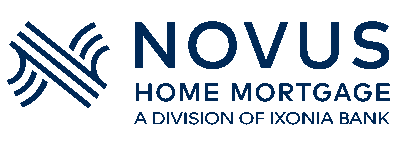
Dan Green
Homebuyer.com
Dan Green (NMLS 227607) is a licensed mortgage professional who has helped millions of people achieve their American Dream of homeownership. Dan has developed dozens of tools, written thousands of mortgage articles, and recorded hundreds of educational videos. Read more about Dan Green.

This website discusses mortgage programs and how to qualify. Your eligibility may vary based on lender guidelines and investor overlays. Check with your lender for specific details.
Trusted Content
This article was checked for accuracy as of January 3, 2025. Learn more about our commitments to accuracy and your mortgage education in our editorial guidelines.
Updated: January 3, 2025
Buying your first home is acronym-heavy. You’ll hear your mortgage lender and real estate agent talk about MBS, DTI, LTV, HOA, and more. Understanding what the mortgage terms mean — and how to say them — can make you a better buyer.
This guide lists the 36 mortgage acronyms you’re most likely to encounter as you buy your first home.
How to pronounce it: “FIZZ-bo”
FSBO is a method where homeowners sell their home without using a real estate agent to avoid paying listing agent commissions. FSBO sellers may still pay commissions to the buyer’s agent.
A National Association of REALTORS® study suggests that FSBO sellers don’t always save money when selling their homes.
Check your eligibility and begin your application now.
How to pronounce it: “HUM-duh”
HMDA is a law that requires banks and mortgage lenders to disclose information on mortgage loans, ensuring fair and equitable lending. Also known as Regulation C, HMDA is designed to promote transparency in lending practices.
Homebuyer.com publishes an annual report on HMDA mortgage data and related statistics.
How to pronounce it: “em-el-ESS”
The Multiple Listing Service (MLS) is a platform that lists homes for sale, providing key details like price, size, and location. Real estate agents use the MLS to assist their clients in buying and selling homes.
How to pronounce it: “HUHD”
The Department of Housing and Urban Development manages national housing policies, enforces fair housing laws, and provides housing assistance. HUD’s mission is to build strong, sustainable, and inclusive communities with affordable homes for all.
How to pronounce it: “are-ee-OH”
REO refers to property owned by a mortgage lender, typically following an unsuccessful foreclosure auction. Lenders often sell REO properties at discounted prices to recover losses from the mortgage.
How to pronounce it: “HEE-lock”
A HELOC is a revolving credit line using a homeowner’s equity as collateral. Like a credit card, homeowners can borrow against the line and pay interest only on the amount used. They can also pay down their debt to reduce interest payments.
How to pronounce it: “EL-EE”
The Loan Estimate provides a summary of a mortgage loan’s estimated costs, including interest rates, loan amounts, and closing costs. By law, home buyers receive their LE within three days of submitting a mortgage application, helping them compare mortgage offers from different lenders.
The LE replaced the Good Faith Estimate (GFE) in 2015. Some lenders still use the terms interchangeably.
How to pronounce it: “pee-em-EYE”
PMI is an insurance policy that protects lenders when a homeowner defaults on their mortgage. For many conventional loans, homeowners pay PMI until they reach 20% equity, at which point the insurance cancels automatically.
How to pronounce it: “ay-pee-ARR”
APR is a standardized calculation showing the cost of borrowing, expressed as a percentage. The APR includes interest, closing costs, and fees to give a more complete view of the loan’s cost over time.
How to pronounce it: “eff-aych-AY”
The Federal Housing Administration, part of the Department of Housing and Urban Development (HUD), insures loans made by FHA-approved lenders, protecting them from losses if a borrower defaults. FHA loans allow for lower down payments and more lenient credit requirements.
How to pronounce it: “ARM”
An adjustable-rate mortgage features an interest rate that changes over time, usually starting with a fixed rate for a set period (e.g., five or seven years) followed by periodic adjustments. ARMs often begin with lower rates than fixed-rate loans because the borrower shares some risk with the lender.
How to pronounce it: “dee-tee-EYE”
The debt-to-income ratio measures how much of a homebuyer’s income goes toward recurring monthly debts. DTI is calculated by dividing monthly debts by gross income. Mortgage programs often have a maximum allowable DTI for approval.
How to pronounce it: “aych-oh-AY”
A homeowners association is a legal entity within a residential community that enforces rules for residents, who are required to join the HOA. The elected board of directors manages amenities, landscaping, and shared services, funded by dues paid by the residents.
How to pronounce it: “PUHD”
A planned unit development is a type of community that combines residential, commercial, and industrial properties with shared open spaces for parks and schools. PUDs are usually managed by a homeowners association.
How to pronounce it: “el-tee-VEE”
Loan-to-value represents the ratio of a mortgage loan amount to the home’s appraised value. A higher LTV means the borrower is putting less money down, while a lower LTV means a larger down payment. LTV is a key factor in mortgage approval.
How to pronounce it: “NAHR”
The National Association of REALTORS® is a trade group representing U.S. real estate professionals, offering resources and educational opportunities while advocating for ethical real estate practices.
How to pronounce it: “see-oh-EE”
A Certificate of Eligibility (COE) verifies eligibility for a VA loan and is issued by the Department of Veterans Affairs. It shows that the borrower has met the VA’s service requirements.
How to pronounce it: “ehl-oh-EX”
A letter of explanation clarifies non-obvious items in a mortgage application, such as credit report discrepancies or irregular income. A clear and concise LOX can help address lender concerns.
How to pronounce it: “em-bee-ESS”
Mortgage-backed securities are bonds backed by groups of mortgage loans and sold to investors. Changes in demand for these securities often affect mortgage rates.
How to pronounce it: “see-em-AY”
A Comparative Market Analysis helps home sellers set an appropriate listing price by comparing their property to similar recently sold homes.
How to pronounce it: “VEE-AY”
The Department of Veterans Affairs provides benefits and services to military veterans, including health care, home loan programs, and educational assistance.
How to pronounce it: “PEE-eye-TEE-eye”
PITI is the total monthly cost of a mortgage, including:
A home buyer’s PITI should fit their housing budget.
How to pronounce it: “yoo-ES-dee-AY”
The U.S. Department of Agriculture oversees rural housing programs, supporting affordable housing in non-urban areas through its USDA mortgage program.
How to pronounce it: “ay-vee-EM”
An Automated Valuation Model is a technology that estimates a home’s value by analyzing property records and market conditions. AVMs are often used by lenders to verify or supplement appraisals.
How to pronounce it: “HECK-um”
A home equity conversion mortgage is a reverse mortgage that allows homeowners 62 or older to convert home equity into cash without monthly payments. The loan is repaid when the homeowner sells, moves out, or passes away.
How to pronounce it: “FY-koh”
FICO scores, developed by the Fair Isaac Corporation, range from 300 to 850 and are a key factor in mortgage approval. Scores of 500 and above are typically required for mortgage approval.
How to pronounce it: “en-em-el-ESS”
The Nationwide Mortgage Licensing System is a centralized database for state and federal mortgage licensing. It promotes transparency and standardization in financial services licensing.
How to pronounce it: “see-oh-OH”
A Certificate of Occupancy verifies that a home meets local building codes and is suitable for occupancy. Mortgage lenders often require a COO for new, renovated, or flipped homes.
How to pronounce it: “see-eff-pee-BEE”
The Consumer Financial Protection Bureau regulates financial products like mortgages, credit cards, and student loans, ensuring transparency and fairness for consumers.
How to pronounce it: “LAR”
The Loan Application Register is a record of mortgage applications that helps enforce fair lending laws. LAR data, collected under HMDA, includes loan and applicant details without personal information.
For more information, review the Homebuyer.com mortgage application statistics.
How to pronounce it: “ess-eff-AR”
A single-family residence is a home zoned for one household. These include detached homes, townhomes, row homes, and certain condominiums.
How to pronounce it: “em-aye-PEE”
MIP is the monthly mortgage insurance for FHA loans. It helps protect the lender if a borrower defaults on their loan.
How to pronounce it: “UP-front em-aye-PEE”
Upfront mortgage insurance premium (UFMIP) is a one-time payment made at closing for FHA loans. Part of the UFMIP may be refunded if the homeowner refinances within three years.
How to pronounce it: “pee-an-EYE”
P&I refers to the principal and interest portion of a homeowner’s monthly mortgage payment, covering the loan repayment and interest on the borrowed amount.
How to pronounce it: “RES-puh”
The Real Estate Settlement Procedures Act protects home buyers by ensuring transparency in real estate transactions. It prohibits kickbacks and referral fees and requires lenders to provide detailed cost information to buyers.
This article, "The 36 Mortgage Acronyms Every Homebuyer Should Know," authored by Dan Green, is based on extensive professional mortgage experience and includes references to trusted sources such as industry-leading financial institutions and expert research from the following websites:
This article was last updated on January 3, 2025.
Wave goodbye to waiting times and say hello to our faster, better mortgage application. It's available anytime you are, 24/7/365. The power to approve your mortgage is just a click away.

A Division of Ixonia Bank
Member FDIC. Equal Housing Lender.
Homebuyer.com
Operated by Novus Home Mortgage,
A Division of Ixonia Bank
1311 Vine St
First Floor
Cincinnati, OH 45202
513-824-8171
Notices
Mortgages
Notifications